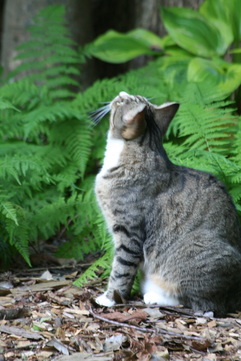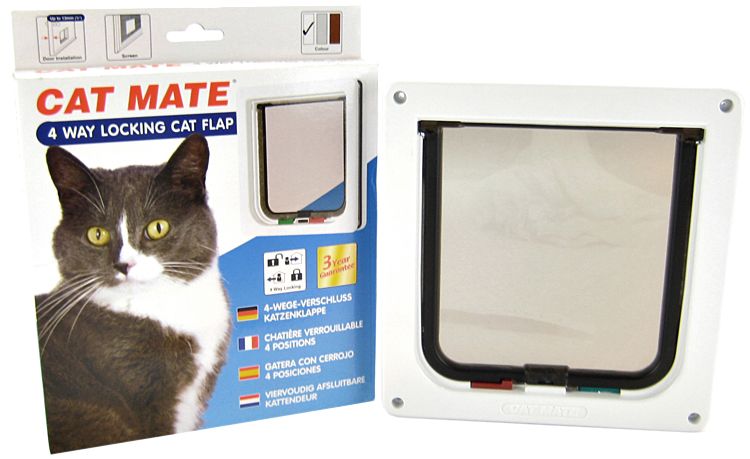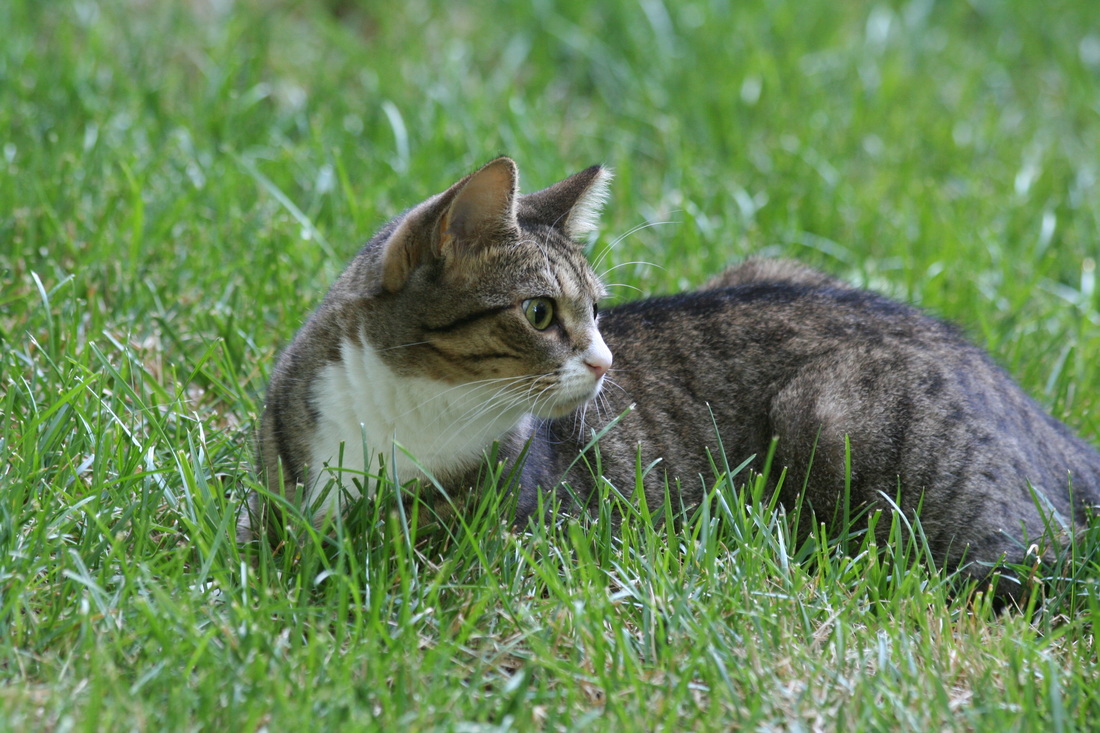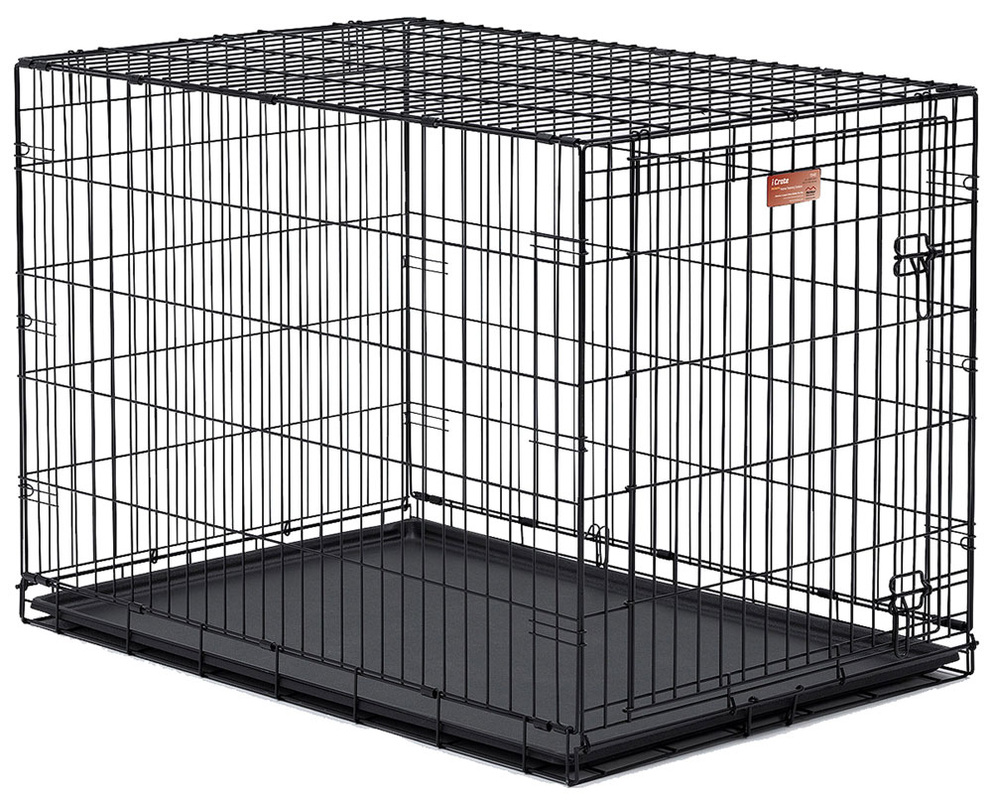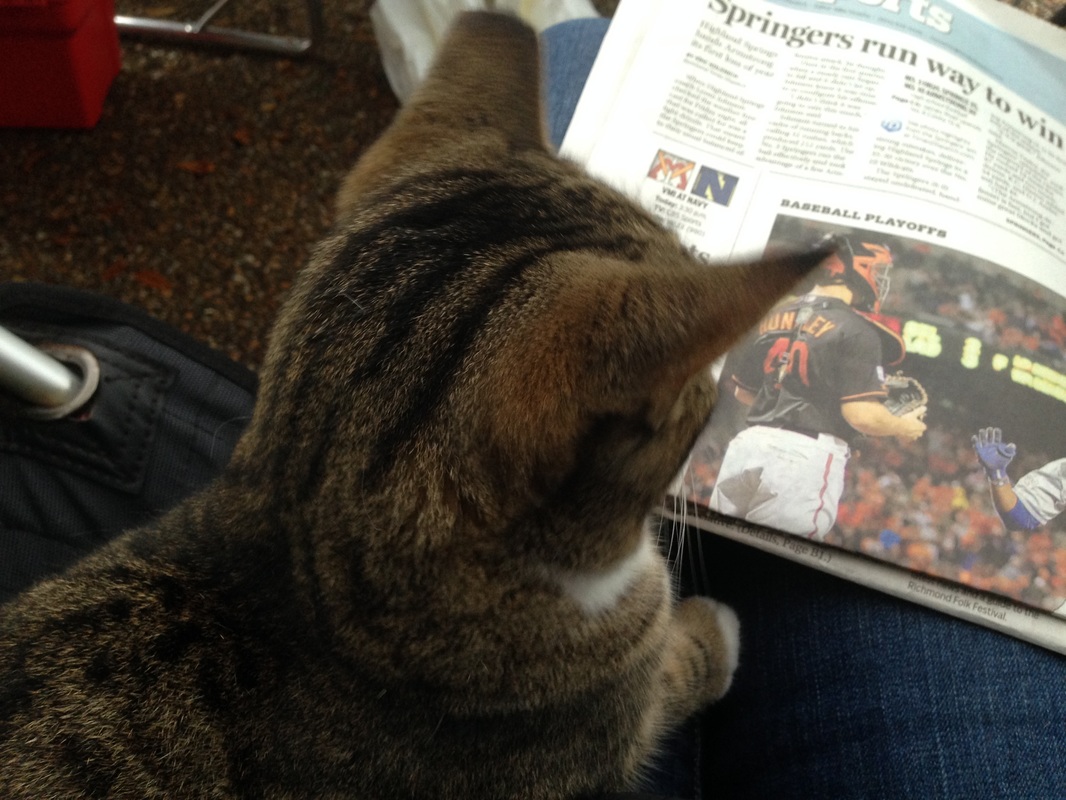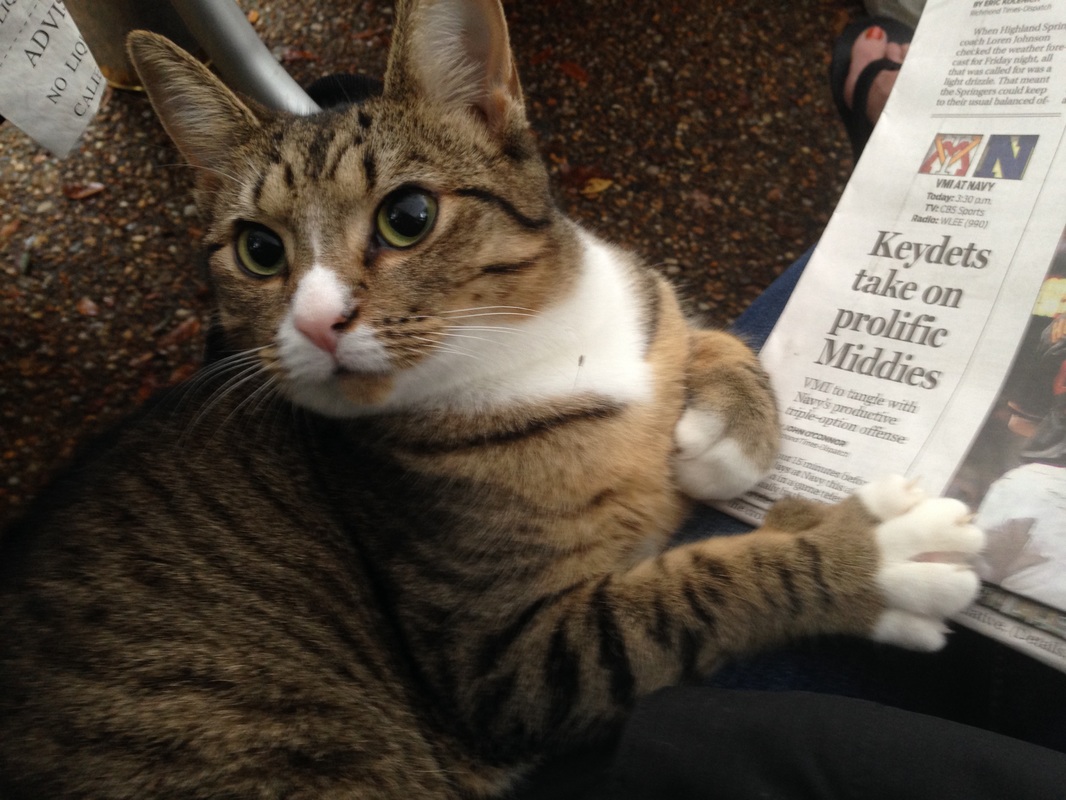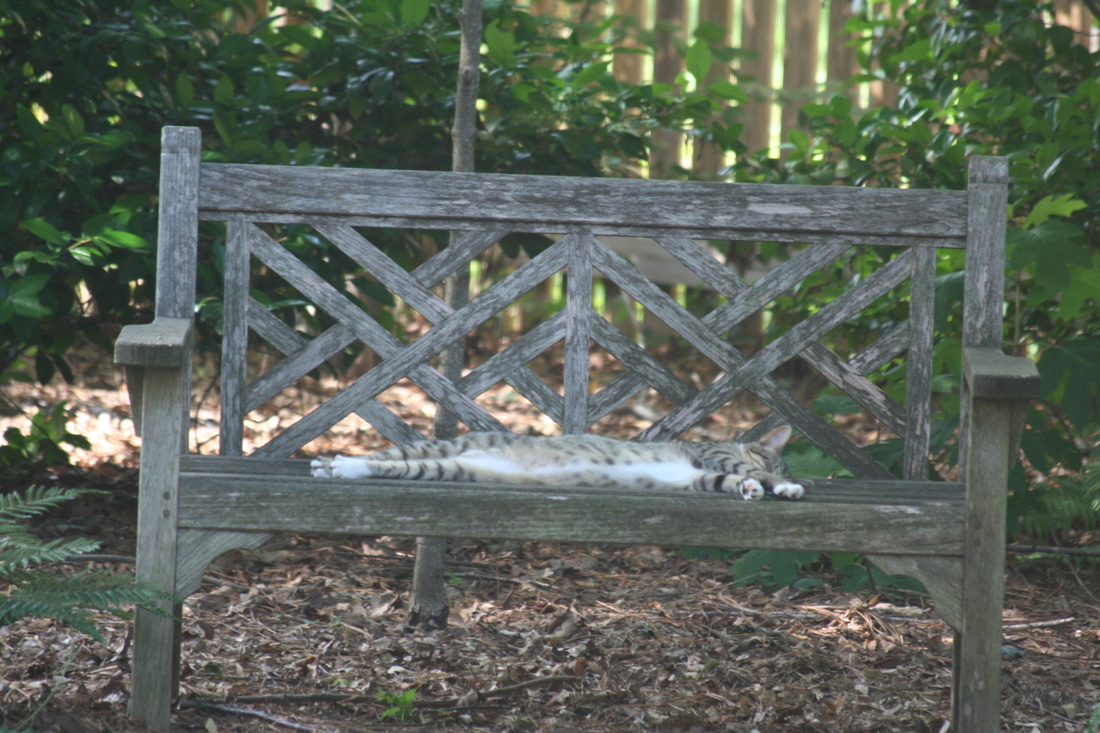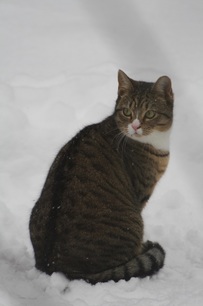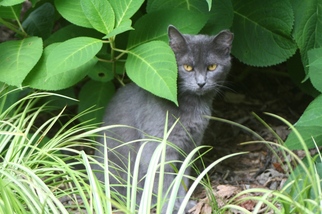Over the next several days, I continued to visit her with cat treats, in a bag I would crush for sound. Eventually, the crinkle of the bag and my voice brought her running. She was definitely a food hustler, a helpful trait for training purposes, but also enjoyed the attention and a little petting now and again. I continued to feed her twice a day, always in the crate, which kept her comfortable with confinement (her next round of shots was due shortly) and allowed me to close the crate door and open the big garage door for an hour or so. She was not only acclimating to her new shelter from inclement weather (our garage), she was also getting use to the sights and sounds of an even bigger outside world, our yard. During week 4, we installed the cat door while Skittles was taking a break in the crate (door closed). We have raccoons in the area, so I initially looked into an automatic cat door triggered by a imbedded microchip. Our door, however, leading outside was metal, which meant the cat door might not function properly.
I settled on a basic door that could be locked four different ways (my magician Snickers can unlock it though, go figure), and I would take the food bowls up after dinner. As I mentioned earlier, both cats are on a dry-food-only diet. Smelly wet food that could attract other animals was not an option. The cat door installation was a piece of cake, perhaps a 20-minute job. Training was planned for week 6. Skittles was just about ready to explore the yard, but I was getting nervous. Had she bonded enough with me and her new home? Would she run away? She and I had invested a lot of time and energy into this project. I needed it to work. My yard needed relief from destructive critters. After doing some research and talking to several folks in the know, including my veterinarian, I decided to adopt two female kittens less than 6 months old. Female feral cats are generally better hunters, since they provide for their kittens, and they would be more adaptable at 6 months or younger. Adopting two would give them companionship, which is something they were use to coming from large colonies of cats, and provide better coverage of the property. Both would be spayed and receive their first set of shots through the trap-neuter-release programs of several local organizations. The hardest part was figuring out a 6-week period when we weren't traveling overnight. We also didn't want the weather to be too hot or too cold. And we knew that kittens are more readily available for adoption in the spring versus any other time of year.
Just inside the crate door, I immediately placed containers of kitty litter, water, and a high quality dry food, all of which were checked, cleaned, and replenished twice a day. With opossums, raccoons, and eventually a cat door between the garage and outside, smelly wet food was not an option. When Skittles used the litter box and finally started to eat, it was only when no one was around. During this first week, no attempt was made to pet her as she pressed herself into the back corner of the crate. We just talked to her. She was one scared kitty to be sure, so the process of taming and acclimation had to be super slow. With the start of week two, I switched to feeding her twice a day and introduced cat treats a few times a day by first dropping them into the crate and then gently tossing them to her through the open door. I also hung out in the garage while she ate her meals. Skittles gradually began to associate the positive pleasure of food with humans. Still, after a few days, when I reached my hand towards her with a treat, no go. She quickly became ricochet rabbit trying to get away, and I quickly closed the door. This was going to take more time.
For some older kittens, like Snickers who came to us at seven months of age, four weeks can be used to stretch this process out even further. The goal is to get wild kittens comfortable with and attached to their surroundings as well as human touch before releasing them into the confines of the garage, which is where we'll pick up next time.
Until then, check out our new perennial pricing for fall planting and have a great week.
Keep in mind, feral and stray cats are not one in the same. A feral cat has never lived inside or been handled by humans. A stray, on the other hand, has lived indoors for part of its life and is use to human contact. Skittles and Snickers were feral (wild), but now I like to think of them as just outdoor cats. The word feral seems evil and they are far from it, having never bitten or scratched me, although Snickers got me once when applying Revolution. She was scared, and I wasn't holding her correctly. Initially, she batted me with her paws and then, when I wouldn't give up, a claw or two came out... my fault on all counts. Today, they both love to be pet. Snickers can be picked up for a quick 5-second snuggle, Skittles slightly longer at 6 seconds, and both will stay on my lap if I insist. When I work in the yard or take "bench breaks" from my home office, they are never far away, chasing each other in the garden, which must be a jungle at that size, running up and down trees, no longer kittens but cats with lots of energy for hunting. As I mentioned, my husband is allergic, so Skittles and Snickers do not come into the main part of our house. However, they do have access to the attached garage via a small cat door, which we installed ourselves and they have been trained to use. The garage is where they seek refuge from inclement weather and where we feed them only high quality, high protein dry food twice a day. And, of course, water is always available. Our yard (and garage) is their home, territory, and hunting grounds, and they seem very content. There is still an innate wildness about them, which makes me believe they could never be indoor pets.
And, so we begin...
|
Welcome to my journal. For over 20 years I've created original landscape plans to help homeowners increase property value and really enjoy their yards. I approach every project as an unique opportunity to develop a work of living art, one that will require minimal care and age beautifully with time. In this journal, I will share some of my field experiences and tricks of the trade with you. Feel free to email questions. Thanks for visiting.
Archives
February 2019
|

